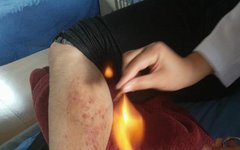


Origin and Current Development of Miao Fire Needle Therapy
01
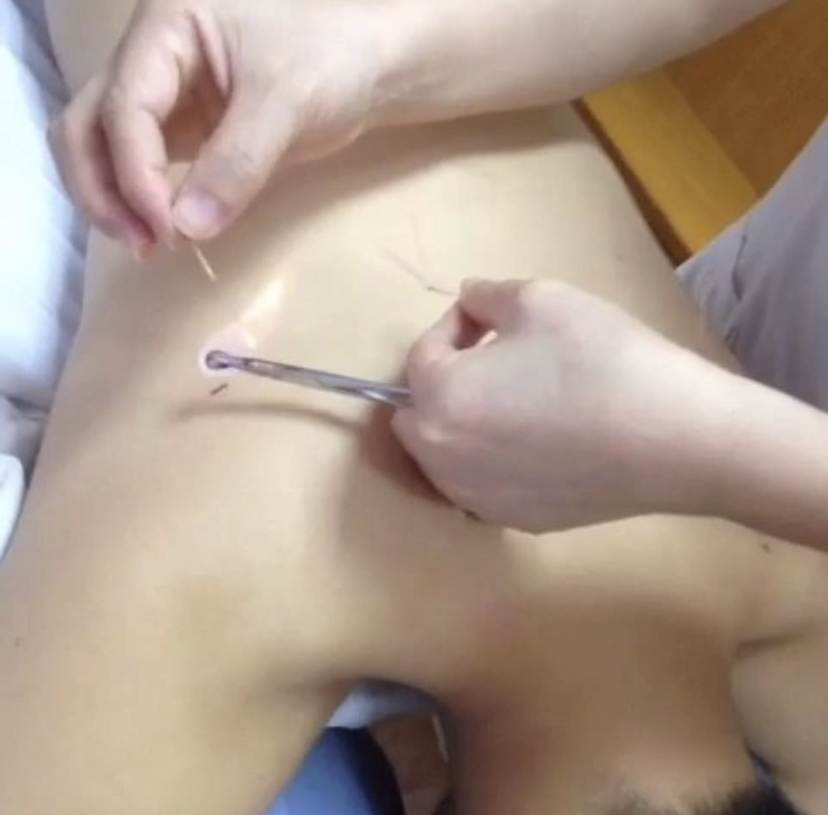
Miao Fire Needle (Miao Huo Zhen) is a new acupuncture therapy in the field of minimally invasive medicine in Traditional Chinese Medicine (TCM).
Miao Fire Needle is developed based on Fire Needle (Huo Zhen) therapy, extending its functions with characteristics of safety, painlessness, remarkable efficacy, rapid action, and minimally invasive nature. It is an innovative therapy by Professor Liu Enming.
Clinical Significance and Mechanism of Miao Fire Needle Therapy
02
(1) Clinical Significance of Miao Fire Needle Therapy
Miao Fire Needle therapy improves local blood circulation, reconstructs pathological tissues, stimulates acupuncture points on the body surface, and invigorates the body’s vital energy (Zheng Qi) to achieve pain relief and disease elimination, supporting the righteous and expelling the evil. Its indications include treating various diseases in internal medicine, surgery, orthopedics, gynecology, pediatrics, and dermatology. It has particularly remarkable effects on soft tissue injuries and bone joint diseases.
Compared to traditional Fire Needle therapy, Miao Fire Needle causes less damage to deep tissues, allows for needle retention, and is less likely to cause infections or adverse reactions. Patients experience minimal pain and fear, require no rest after treatment, and the treatment duration is short, making it easily accepted by patients.
(2) Mechanism of Miao Fire Needle Therapy
Current research on the mechanism of Miao Fire Needle therapy mainly explores it from a molecular biology perspective. Several theories summarize the mechanisms, including the injury theory, activation theory, expulsion theory, carbonization theory, promotion theory, absorption theory, and bactericidal theory.
1. Injury Theory
During Miao Fire Needle treatment, the needle body must be heated to red-hot and then quickly inserted into the adhesions and scar tissues, causing minor thermal burns and necrosis of the surrounding pathological tissues. The necrotic tissue acts as a stimulus, prompting a response from surrounding healthy tissues, leading to the infiltration of white blood cells and macrophages to absorb the damaged substances. After absorption, the missing cells and tissues are repaired through the regeneration of surrounding healthy tissue cells, restoring the original tissue structure.
2. Activation Theory
The needle body of Miao Fire Needle may cause acute local tissue reactions, including muscle fiber rupture, thereby activating immune responses to achieve therapeutic effects. Experimental results indicate changes in total white blood cell count, neutrophil count, total complement, lysozyme, blood glutathione, and serum cortisol after acupuncture, which are beneficial for anti-inflammation.
3. Expulsion Theory
Miao Fire Needle directly targets the disease site, using high temperatures to destroy inflammatory lesions, facilitating the expulsion of exudates and promoting the absorption of inflammation.
4. Carbonization Theory
Miao Fire Needle, with its high temperature, reaches the disease site, carbonizing the pathological scar tissue in a small area around the needle, thereby relieving the adhesions and improving local blood circulation.
5. Promotion Theory
Miao Fire Needle directly stimulates the lesions and reflex points, rapidly alleviating or improving pathological changes such as local tissue edema, congestion, exudation, adhesion, calcification, contraction, and ischemia, thus accelerating circulation and enhancing metabolism, allowing damaged tissues and nerves to repair. This aligns with TCM theory, where Miao Fire Needle supports the righteous, aids Yang, warms the meridians, and expels evil heat, regulating Qi and invigorating blood.
6. Absorption Theory
Miao Fire Needle puncture has the effect of dissipating masses and promoting the absorption of chronic inflammation, stimulating the body’s ability to absorb necrotic tissues.
7. Bactericidal Theory
When the Miao Fire Needle is inserted into the affected lymph nodes at a high temperature, it may relate to the sensitivity of Mycobacterium tuberculosis to high temperatures. The efficacy mechanism still requires further exploration. In TCM theory, Miao Fire Needle is particularly effective in warming and unblocking the meridians, and puncturing ulcerated areas can help unblock the meridians, disperse heat, eliminate necrosis, and relieve pain.
Functions and Indications of Miao Fire Needle Therapy
03
1. Pain Relief
Expelling cold and dampness, warming the meridians, promoting Qi and invigorating blood flow, thus stopping pain. This is the pathological mechanism of Miao Fire Needle in treating pain due to cold, dampness, or wind evil. It is particularly effective for conditions like Bi syndrome, rheumatoid arthritis, low back and leg pain, especially myofascial pain in the neck and back, and stubborn rheumatic diseases.
2. Itch Relief
Unblocking the meridians allows for smooth Qi flow, thus expelling wind and relieving itching. Miao Fire Needle not only alleviates pain but also effectively relieves itching. It can treat various skin diseases characterized by itching, such as neurodermatitis and psoriasis.
3. Numbness Relief
Qi is the commander of blood; when Qi flows, blood nourishes, and Miao Fire Needle helps Yang reach the meridians, thus resolving numbness. It can treat various skin diseases characterized by numbness.
4. Spasm Relief
Promoting Qi and blood flow, adjusting the meridians, thus relieving spasms. Miao Fire Needle is suitable for facial muscle spasms and late-stage spasms due to nerve paralysis.
5. Diarrhea Relief
Strengthening the spleen and promoting dampness, harmonizing the stomach and intestines, warming and consolidating, thus stopping diarrhea. Miao Fire Needle is adept at treating chronic enteritis leading to abdominal distension and diarrhea.
6. Cough and Asthma Relief
Cold-induced lung damage can be treated by expelling evil and warming. Symptoms caused by cold, such as cough and wheezing, can be alleviated by Miao Fire Needle warming the lung cold and unblocking lung Qi. When the lungs are open, Qi flows, and when the cold is expelled, cough and wheezing will resolve.
7. Fire Reduction and Detoxification
Expelling heat outward, used for heat syndromes such as shingles, erysipelas, mumps, and mastitis, which are characterized by redness, swelling, and pain.
8. Dissolving Stasis and Necrosis, Promoting Pus Discharge
Promoting tissue regeneration and healing, invigorating vital energy, and enhancing blood circulation. It has immediate effects on certain skin diseases and surgical conditions, such as thrombophlebitis, acne, abscesses, hemorrhoids, and elephantiasis.
9. Dissolving Nodules and Masses
Assisting Yang transformation, softening hard masses, invigorating blood and resolving stasis, eliminating scrofula, and dispersing fibrous masses. Scrofula is caused by Mycobacterium tuberculosis; fibrous masses are formed by Qi and blood stasis, including visible and palpable lumps such as hemangiomas, lipomas, fibromas, warts, and moles. Miao Fire Needle can also treat conditions like ganglion cysts, uterine fibroids, ovarian cysts, and post-stroke sequelae.
10. Strengthening Yang and Nourishing Deficiency, Elevating Yang Qi, Supporting Righteousness
Miao Fire Needle can treat diseases caused by insufficient central Qi and a cold constitution, such as uterine prolapse, lumbar and knee weakness, impotence, dysmenorrhea, irregular menstruation, and gastric prolapse due to spleen and stomach deficiency. It can also invigorate the Qi of the spleen and stomach, ensuring sufficient nourishment for the meridians, thus improving conditions like muscle atrophy and paralysis.
Contraindications of Miao Fire Needle Therapy
04
1. General Contraindications
① Hemophilia, thrombocytopenia, and abnormal coagulation times are absolute contraindications. Sometimes patients may be reluctant to undergo coagulation function tests before treatment, but as doctors, we should persuade them to comply. Necessary tests must be performed based on hospital equipment conditions without negligence.
② Patients with mental illness, severe neuroses, or a history of hysteria should be treated with caution. Signs of such conditions should be carefully observed in patients.
③ Acute phases of all internal diseases, such as coronary heart disease, myocardial infarction, heart failure, and acute phases of lung, liver, gallbladder, pancreas, and kidney diseases, should not undergo Miao Fire Needle therapy.
④ Patients with leukopenia, accelerated sedimentation rate, and anemia should wait for improvement before undergoing Miao Fire Needle therapy.
⑤ Patients with uncontrolled hypertension and diabetes should delay treatment until blood pressure stabilizes and blood sugar approaches normal levels.
2. Local Contraindications
① Areas with inflammatory signs, such as fistulas or cellulitis, should not receive Miao Fire Needle therapy.
② Areas with important organs, large blood vessels, or nerve trunks that cannot be avoided, which may cause bleeding, nerve damage, pneumothorax, infection, or other injuries.
③ There are no strict age restrictions in the contraindications. Age is not an absolute factor; as long as the patient is in good health and vital signs are stable, age is not a major barrier. However, the tolerance of elderly patients and the extent of stimulation and interference from Miao Fire Needle therapy should be fully considered. Some conditions are indications for Miao Fire Needle therapy, and only after treatment can they be resolved. If it is estimated that the patient can tolerate it, treatment should be conducted with proper communication to aim for early pain relief.
Predictable Risks of Miao Fire Needle Therapy
05
1. Patients may experience fainting due to excessive tension or fatigue.
2. Minor vascular damage during Miao Fire Needle treatment may cause local subcutaneous hematomas or bruising.
3. Anatomical variations may lead to nerve or tendon injuries.
4. During neck Miao Fire Needle treatment, anatomical abnormalities may cause carotid artery rupture, leading to death.
5. During chest and back Miao Fire Needle treatment, anatomical abnormalities may cause pneumothorax, hemothorax, or injury to adjacent organs.
6. Infection at the needle site after treatment.
Text and Images:熊东梅
Editor: Zhang Luyun
Proofreader: Zhou Jie
Reviewer: Wang Yan


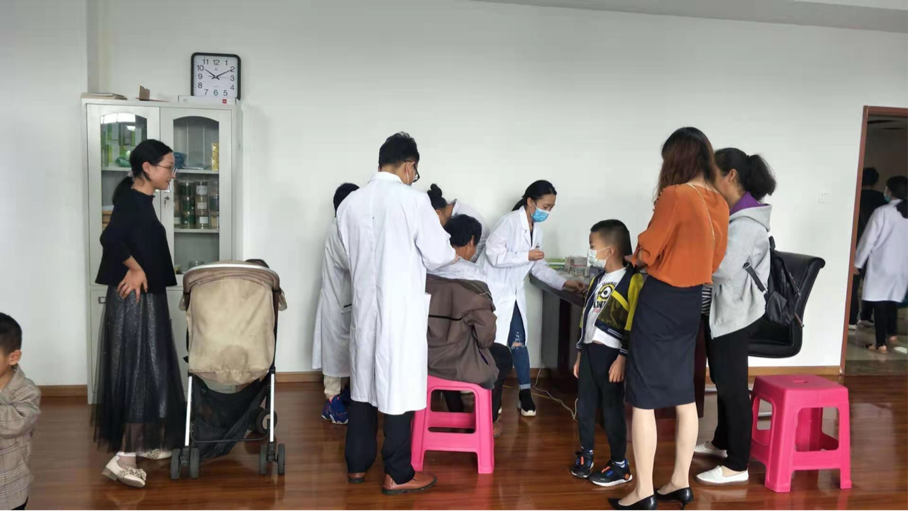
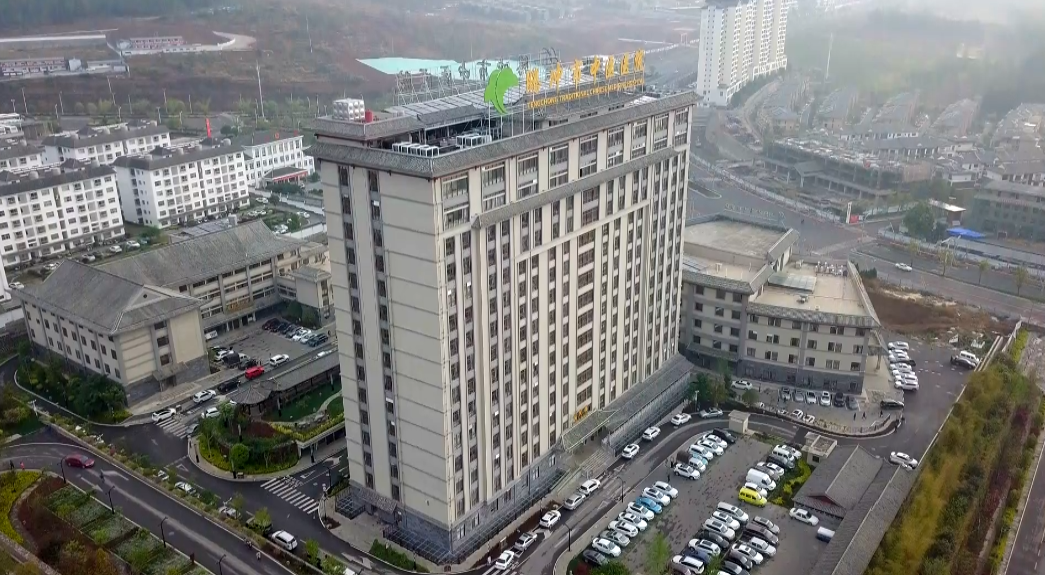
Tengchong City Traditional Chinese Medicine Hospital
Bus Routes:Take bus routes 1, 5, 6, 9, or 10 to “Tengchong City Traditional Chinese Medicine Hospital South Gate”.Hospital Free Shuttle Service:Old Hospital Shuttle Departure Times and LocationsDaily at 8:00, 10:00, and 14:00; departing from the old hospital outpatient entrance.New Hospital Shuttle Departure Times and LocationsDaily at 9:00, 12:00, and 16:00; departing from the inpatient building near the south gate.Attached: Guide Map

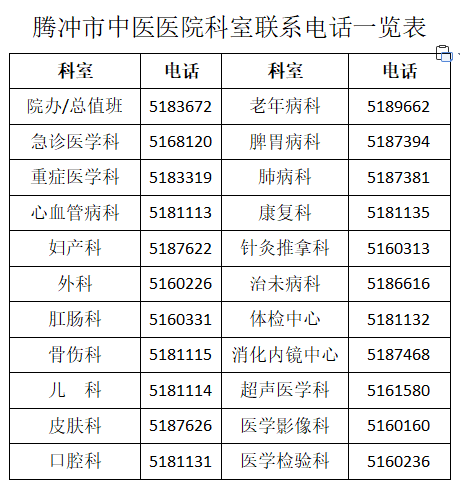

Our hospital’s inpatient insurance reimbursement ratio has increased by 10%
The threshold for reimbursement has been reduced by 100 yuan
More attention More love
More love

